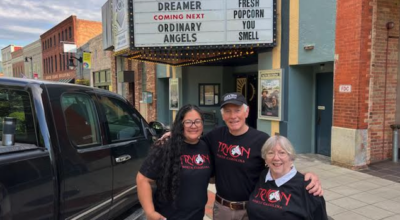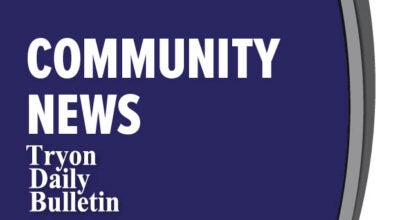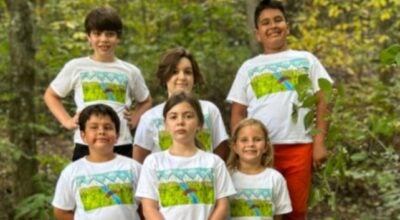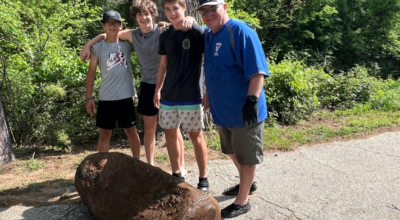Center launches countdown to call attention to nonprofit needs
Published 4:34 pm Friday, December 11, 2009
The N.C. Center for Nonprofits recently launched its first year-end countdown to highlight the needs of nonprofit organizations across the state. With only a short time before the end of the year, the Center urges North Carolinians to give as generously as they can to support the causes they care about.
Nonprofits step up to take on the issues that concern people across the state from education, health, and basic human needs to culture and the environment, said Jane Kendall, president of the N.C. Center. Despite these tough times for many people, there are always others who need a helping hand even more.
The economy has handed nonprofits a double whammy – skyrocketing needs in the community just when they have fewer dollars to help respond. North Carolinas 11percent unemployment rate and population growth are amplifying our states persistent challenges, said Kendall. This increases the demand on nonprofits that try to address basic human needs, as well as those that work to improve other aspects of the quality of life across the state.
Record numbers of people are seeking help at food banks, crisis assistance centers, homeless shelters, domestic violence shelters, and consumer credit counseling services. The rising demand for nonprofit services means these organizations need more, not fewer, funds.
Nonprofit staff and board leaders are taking bold steps to ensure they can remain on the front lines of serving their communities. Tog Newman, chair of the Centers board and a member of the boards of the N.C. Arts Council and the Southern Arts Federation, said, Many nonprofits have cut non-essential programs and have had to add fees to help pay the real costs previously subsidized by other funds that have since disappeared. Theyre looking for new ways to work together to create economies of scale, and theyre deepening existing partnerships. Too many have had to lay off staff, further hampering their ability to deliver services. We must realize there is a limit to what nonprofits can do without funding. Thats why North Carolinians personal giving is so important.
Meanwhile, organizations that work on other issues such as the arts, cross-cultural understanding, social justice, and the environment – are facing their own challenges. Nonprofits of all types and sizes are experiencing funding cuts. With the fall in investment earnings, many foundations have seen their assets slashed by 20-35 percent. This means they have fewer dollars for grants to support nonprofits work. At the same time, lower tax revenues have reduced the funds that local and state governments have to support services that they ask nonprofits to deliver. Fewer contributions by community-minded businesses make the problem even worse.
But by far, the largest source of donated funds for nonprofits is individuals and families that care about the community and want to make things better for everyone. In 2008, individuals contributed 82 percent of private giving in the U.S., so their support is vital. This is especially true at the end of the year when 88 percent of nonprofits do their annual appeals.
People who have lost their jobs or homes are reducing their charitable giving, but Americans tend to keep giving even in hard times. Since even before the Great Depression, giving has steadily increased in all but two years, 1987 and 2008. During the current economic crisis, giving has fallen an estimated 5.7 percent.
According to Trends in Charitable Giving in North Carolina and the Research Triangle 1997-2006, by The Urban Institute and NCGives, North Carolinians are generous. They give an average of 2.8 percent of their income, which is higher than the 2.3 percent national average. Households in North Carolina that itemize tax deductions give an average of $4,282 annually almost $200 more than the national average of $4,109. Nationally, households with annual incomes below $40,000 give a higher proportion of their dollars than those with higher incomes. This generosity can be tapped in times like these.
A recent Harris Interactive study showed that 84 percent of people prefer to receive a gift that benefits someone else instead of a traditional holiday present. This represents a perfect opportunity for nonprofits, said Melissa Le Roy, executive director of Foothills Equestrian Nature Center (FENCE) in Tryon.
Stick Williams, president of The Duke Energy Foundation, suggests Consider giving more this year to two or three nonprofits that work on problems of most concern to you. You might give some to provide direct services and some to address the root causes of the problems.
Now is when all of us need to look around our communities and take stock of the critically important work that nonprofits are doing. If you want that work to continue, you have to dig deep into your pockets, says Jane Preyer, director of the North Carolina office of Environmental Defense Fund.
To learn more about nonprofits in your area or those that address issues of particular interest to you, visit www.ncnonprofits.org/member.asp to search by county or field.
The N.C. Center for Nonprofits (www.ncnonprofits.org) is a statewide network for nonprofit board and staff members, an information center on effective nonprofit organizational practices, and an advocate for the nonprofit sector as a whole. Its mission is to enrich North Carolinas communities and economy through a strong nonprofit sector and nonprofit voice. More than 1,500 nonprofits in all 100 counties of North Carolina are members.





